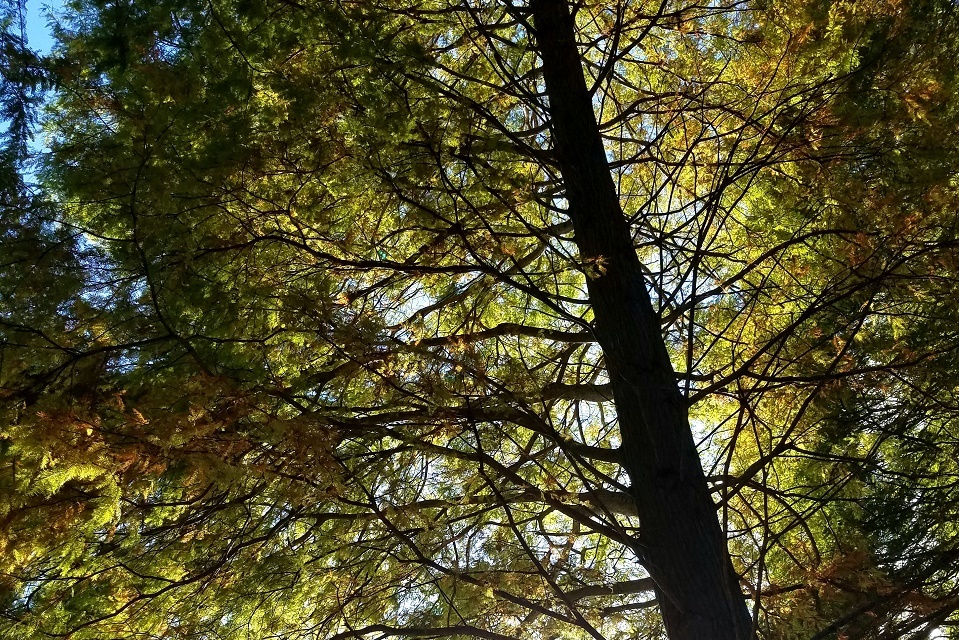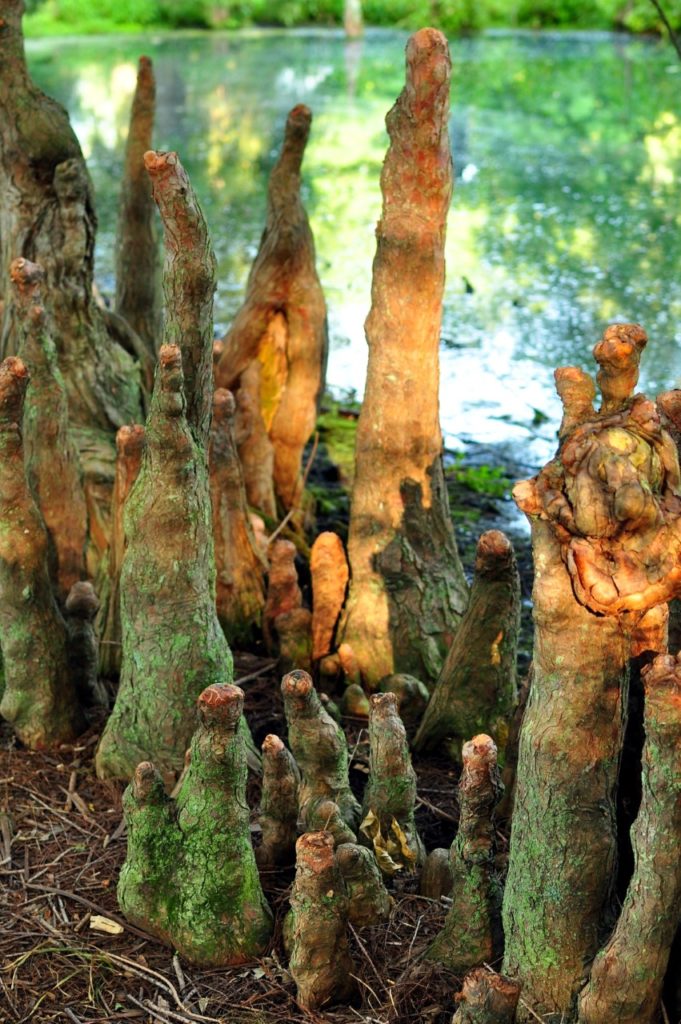
UT Gardens’ November 2020 Plant of the Month
Submitted by Alice Clark, volunteer coordinator and horticulturist, UT Gardens, Knoxville
Taxodium distichum, commonly known as bald cypress, is a deciduous conifer native to the southeastern United States. Pyramidal in shape, bald cypress grow to be a towering 70 feet tall with a spread that measures to 50 feet. These trees require full sun to thrive.
T. distichum loves wet sites. If you’ve ever seen it growing by a pond or lake, you may have noticed its knees. These projections grow out of the ground, and many early theories supposed that these growths functioned like aerial roots. Little evidence today supports this hypothesis, but the growths make this a very interesting plant to add to your landscape.

Bald cypress also thrives in drier soils. Typically when planted in average-to-dry, unirrigated soil, knees will not form. If they do pop up, their numbers are likely to be few, and they should not grow very tall.
One of the best features of T. distichum is its foliage. Soft, needle-like leaves emerge in spring. Their feathery texture allows the trees to be extremely wind resistant. In East Tennessee, this foliage then turns a gorgeous bronze in mid-October and early November. The leaves slowly fall from the tree over several weeks and create stunning autumnal colored mats in the garden. If you have a couple of trees, the fallen leaves will result in several inches of leaf mulch.
As winter approaches and all the leaves have fallen, the reddish-brown bark becomes the star. The slightly exfoliating bark, along with its deciduous nature, gives this tree its common name, bald cypress. The water-resilient wood from the bald cypress has been traditionally used for a variety of furniture items, such as flooring, shingles, caskets and flower boxes.
Some say these trees are living fossils. The oldest living specimen of this tree can be found along the Black River in North Carolina and is more than 2,600 years old! The largest standing tree resides in St. Francisville, Louisiana, and is 56 feet in diameter and more than 1,500 years old.
Don’t have room for the straight species? No problem. There are a variety of similar cultivars on the market that are great for smaller spaces.
‘Cascade Falls’ is a weeping form that reaches 8 to 20 feet high. A specimen can be viewed at the UT Gardens, Knoxville, and is visible as you drive by on Neyland Drive. ‘Peve Minaret’ is a dwarf cultivar growing 8 to 10 feet high and 3 to 4 feet wide in about 10 years. A ‘Peve Minaret’ specimen can be viewed at the UT Gardens, Crossville, in the conifer garden. ‘Mickelson’ Shawnee Brave™ is narrowly pyramidal, 50 feet high and 20 feet wide, good for small urban spaces.
Additionally, you can find a small grove of the straight species growing in Tranquility – The Cornelia B. Holland Hosta Garden at the UT Gardens, Knoxville. The UT Gardens location in Jackson also has several cultivars, including ‘Cascade Falls’, ‘Falling Waters’, ‘Peve Yellow’, ‘Mickelson’ Shawnee Brave™, ‘Skyward’ Lindsey’s Skyward™, and ‘JFS-SGPN’ Green Whisper.
The UT Gardens includes plant collections located in Knoxville, Crossville and Jackson. Designated as the official botanical garden for the State of Tennessee, the collections are part of the UT Institute of Agriculture. The Gardens’ mission is to foster appreciation, education and stewardship of plants through garden displays, educational programs and research trials. The Gardens are open during all seasons and free to the public. For more information, see the Gardens website: utia.tennessee.edu/state-botanical-garden.